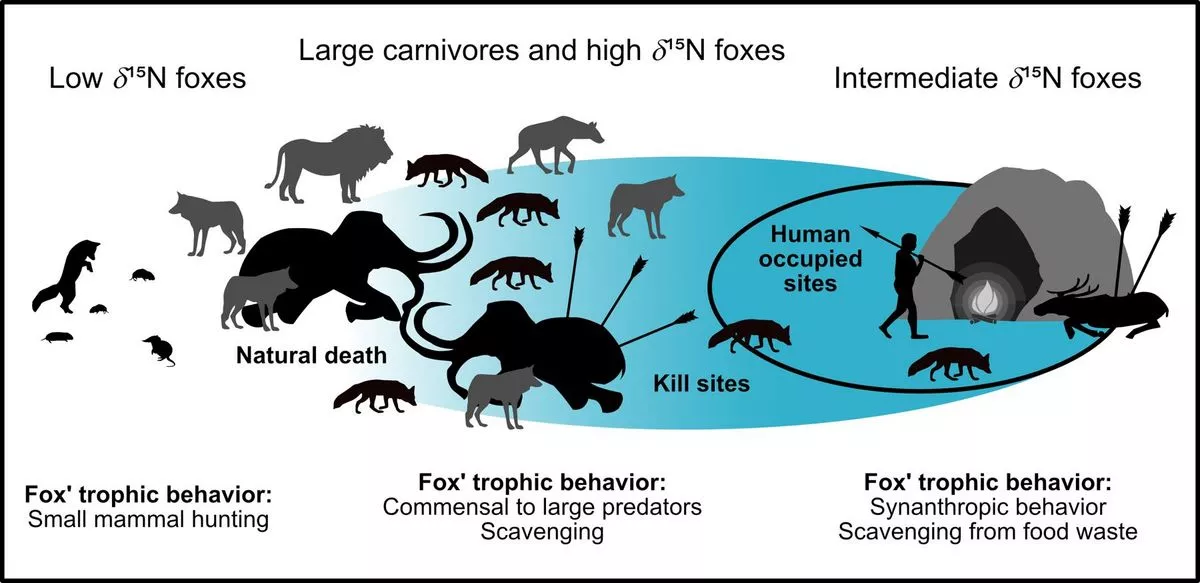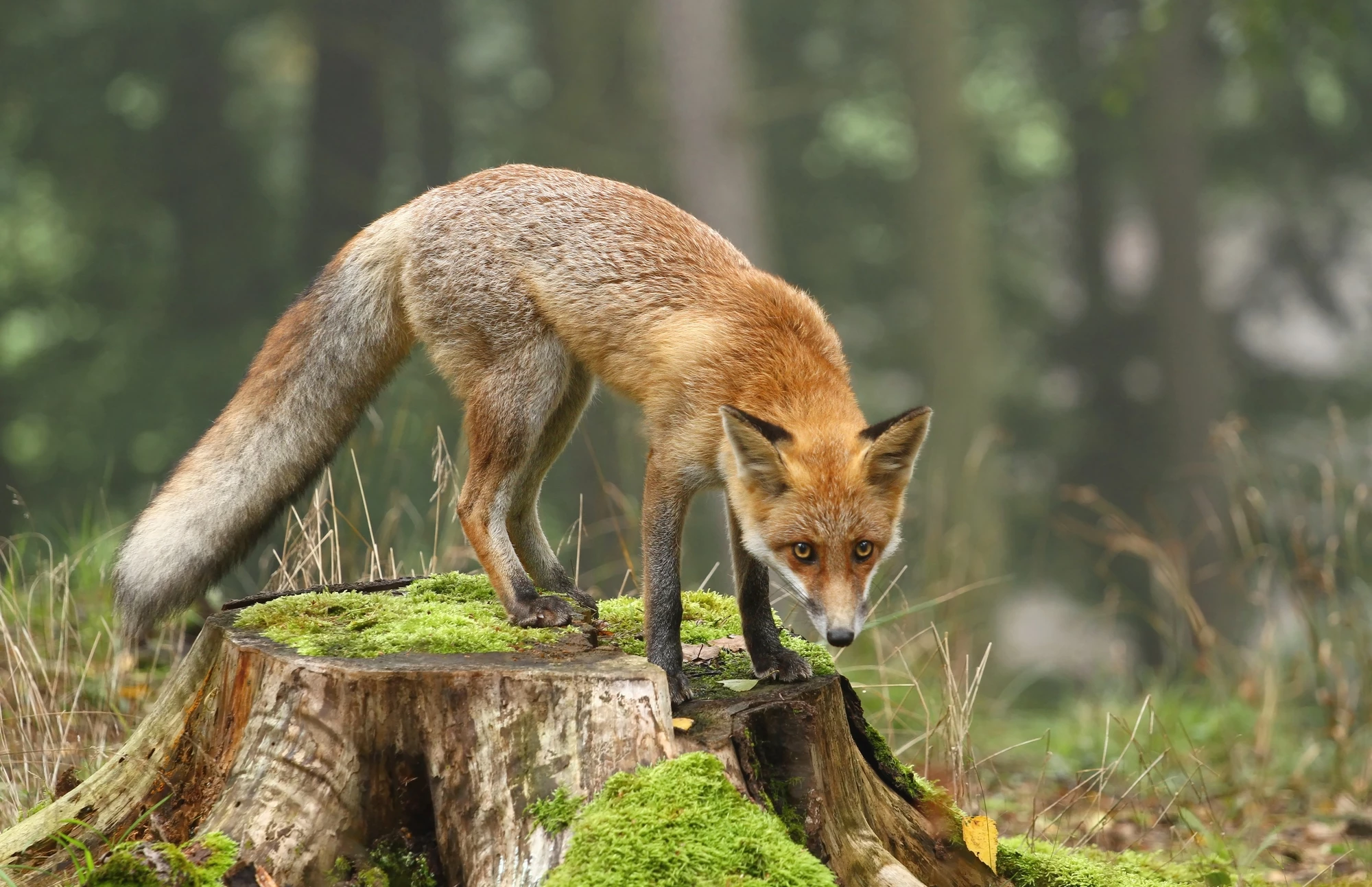An investigation by scientists from the University of Tübingen has found that foxes may have been feeding off human scraps for over 40,000 years. Based on a study of several sites in southern Germany, isotopic analysis shows ancient foxes fed on the remains of animals large enough that they were likely leftovers from human hunting parties.
Since the 1930s, foxes have been making their way into a number of major cities, with London alone now being home to a population of about 10,000 red foxes. These urban predators and scavengers have become a common sight in many places, especially suburban areas, as they take advantage of easy shelter and a buffet of readily available bin bags. The latter makes particular sense because a discarded chicken tandoori won't run away and isn't likely to bite you in the eye.
However, it now turns out that foxes may well have been eating human leftovers for tens of thousands of years, supplementing their traditional diet of voles, rats, mice and shrews with animals as large as reindeer and mammoths. The tricky thing has been finding solid evidence for this.
If we want to see what modern foxes are eating, we can observe them, check the contents of their stomachs, or catalog food remains in their feces. For ancient animals, it's a bit more complicated. While it may be possible to find fossilized fox scat or make deductions from things like tooth wear, direct markers need a bit of lateral thinking to find.
For the scientists from the Senckenberg Center for Human Evolution and Palaeoenvironment at the University of Tübingen, this was found in the form of fox bones that were excavated from several caves in the Swabian Jura, where some foxes lived near anatomically modern humans in the Late Pleistocene between 42,000 and 32,000 years ago.
Before this time, the main diet of the red fox and arctic fox were small animals, but by looking at the isotopes recovered in later bones, a shift was seen that corresponded with modern humans pushing out the Neanderthals and becoming numerous enough to affect foxes by providing them with a new ecological niche. This was demonstrated in fox bones showing ratios of various isotopes associated with larger animals.

"The isotopic data from the fox bones indicate that the composition of several animals’ diets changed," says study author Hervé Bocherens. "We assume that these foxes now lived mainly on meat waste left behind by humans, or perhaps were even fed by them."
According to the team, the meat was from reindeer that the humans brought back to the caves to cut up and cook, and from mammoths, which were too large to move and were butchered where they fell.
Unfortunately, it wasn't all of benefit to the foxes. Jawbones from the Vogelherd Cave in the Lone Valley revealed Upper Palaeolithic-era incisions, which is evidence that the humans were using the foxes as a source of meat and fur.
The research was published in PlosONE.
Source; University of Tübingen





